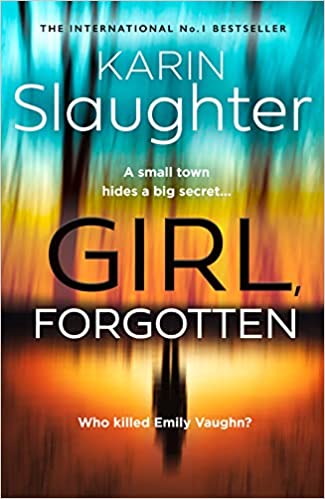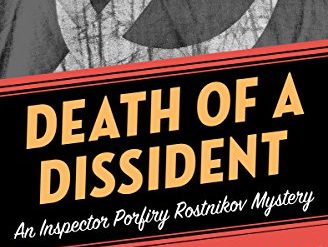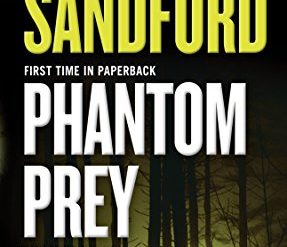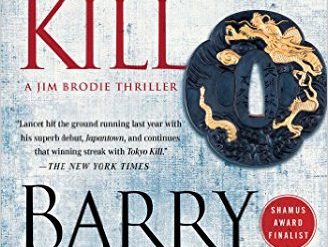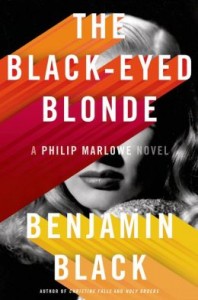
I’ve never been a fan of books written by contemporary writers using legendary characters created by someone long dead — but I’m such a big fan of Benjamin Black’s Quirke series set in Dublin that I couldn’t resist grabbing up his recreation of Raymond Chandler’s legendary detective, Philip Marlowe. The Black-Eyed Blonde is Black’s first effort at rejuvenating the series in an arrangement with Chandler’s estate. Chandler himself wrote the title; it was one of several in a list of possible new books about Marlowe. Black did the rest, and he did it brilliantly.
Estimated reading time: 3 minutes
The Black-Eyed Blonde opens in quintessential Chandler style with Marlowe sitting in his office: “It was one of those Tuesday afternoons in summer when you wonder if the earth has stopped revolving. The telephone on my desk had the air of something that knows it’s being watched.”
Enter the Black-Eyed Blonde. Like so many of Marlowe’s favorite characters, she’s tall, slender, gorgeous, and oh so mysterious. (“That smile: it was like something she had set a match to a long time ago and then left to smolder on by itself.”) Despite his misgivings, Marlowe agrees to take her case. Soon, he finds himself caught up in a situation he doesn’t understand, manhandled by thugs, “slipped a Mickey Finn,” beaten senseless, and threatened with death, all in an effort to stay close to a beautiful woman he doesn’t trust and to learn the truth of the strange case she has hired him to solve.
The Black-Eyed Blonde: A Philip Marlowe Novel by Benjamin Black (John Banville) ★★★★☆
Contemporary critics call this sort of writing and film “noir” (meaning black, just in case you didn’t know). Perhaps in its day — chiefly, the 40s and 50s — its criminal characters, casual violence, and cynicism came across as realistic. Today, at least to me, it often reads like droll humor. Benjamin Black, masterful writer that he is, has beautifully captured the tone and the language of the genre, which adds another layer of humor: Black is the pseudonym for John Banville, a Booker Award-winning Irish novelist celebrated as one of the premier stylists in the English language today. He writes crime fiction for fun — and, presumably, for profit as well.
Philip Marlowe first appeared in print in 1939 in Raymond Chandler‘s first full-length novel, The Big Sleep. This “hard-boiled detective” was central to Chandler’s subsequent writing in the 1940s and 50s. He invaded movie screens, too, and, along with Dashiell Hammett’s Sam Spade, became the prototype for legions of later fictional detectives.
Chandler was one of the most successful of the many pulp magazine writers of the 1930s who graduated into writing novels full-time. Chandler, Hammett, James A. Cain, and others, many of them graduates of Black Mask magazine, became fixtures in the field of crime fiction.
For related reading
I’ve reviewed all the Quirke novels published to date at The Quirke series of Dublin crime novels from Benjamin Black.
I’ve also reviewed three other Benjamin Black novels:
- Wolf on a String (A murder mystery set in the Holy Roman Empire);
- The Lemur, set in contemporary New York City and Dublin (A murder mystery from a master stylist); and
- The Secret Guests, a World War II thriller (Booker Award winner Benjamin Black returns to historical fiction).
You’ll find this and dozens of other excellent novels at 5 top Los Angeles mysteries and thrillers and 5 top novels about private detectives.
You might also enjoy my posts:
- Top 10 mystery and thriller series
- 20 excellent standalone mysteries and thrillers
- 30 outstanding detective series from around the world
- Top 20 suspenseful detective novels
- Top 10 historical mysteries and thrillers
And you can always find my most popular reviews, and the most recent ones, on the Home Page.


